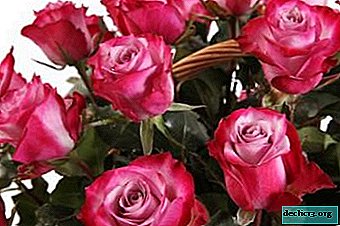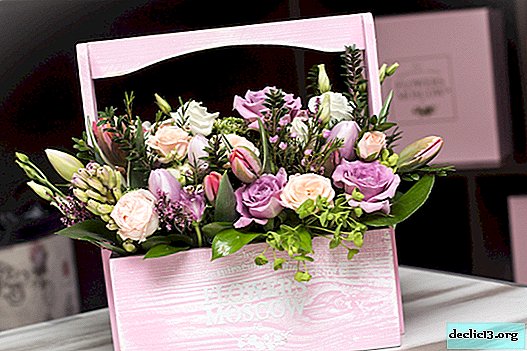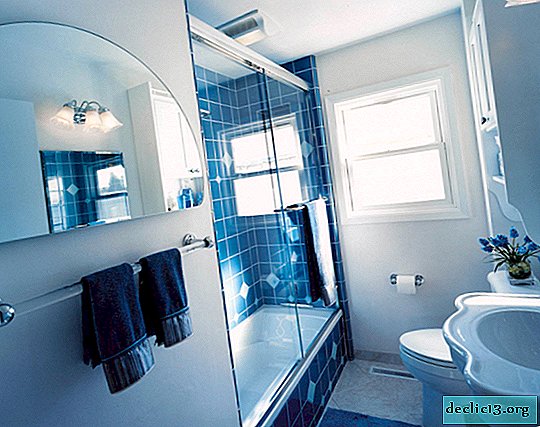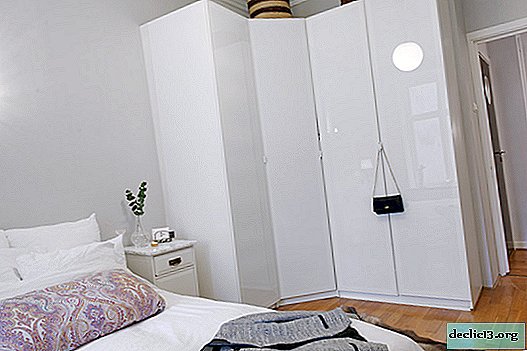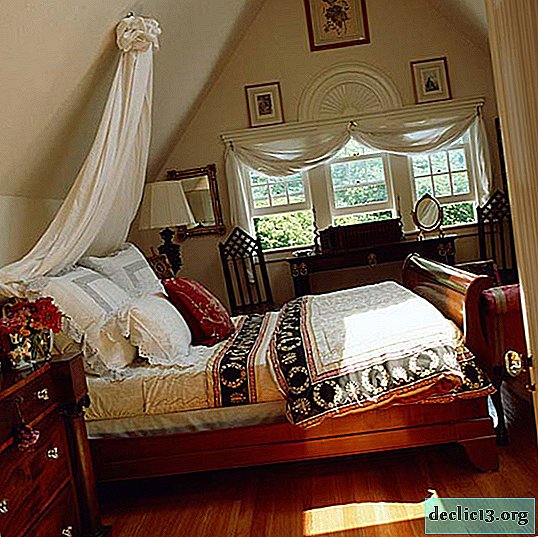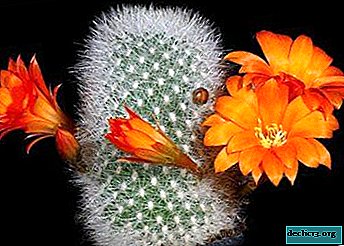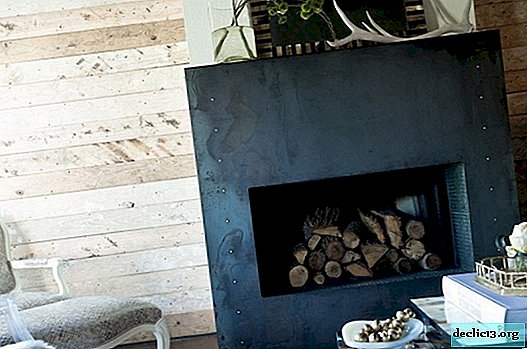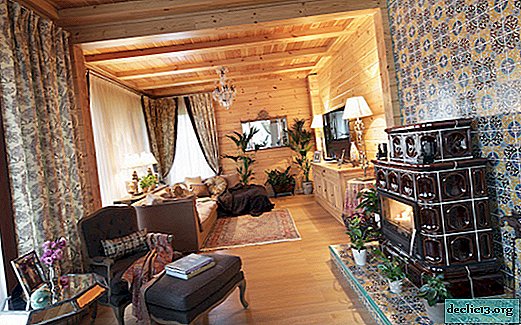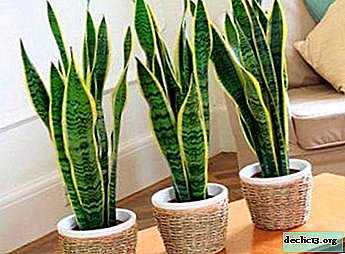Bright resident of flower beds petunia stunted: varieties, especially planting and care
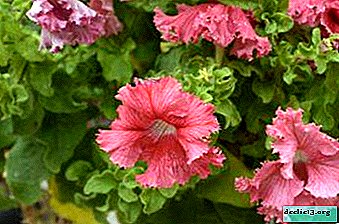
Low petunia is a decorative culture, which today has become widespread in the decoration of the garden, flower beds. The plant is distinguished by large and bright colors.
Using its various varieties and planting them on a flowerbed, it is really possible to get an original and incredibly beautiful floral arrangement, which, with proper care, will please you with long and abundant flowering. How to grow and care for this type of petunia - read in our article. We also recommend watching a useful video on this topic.
Briefly about the plant and its history
ATTENTION: South America remains the birthplace of stunted petunias. The plant belongs to herbaceous perennials, but on the territory of Russia they grow it like an annual. Petunia is not suitable for indoor cultivation. It adorns windows and balconies only from the outside.The name of the genus comes from the word petun, which means tobacco. And this is not accidental, since the leaves of the plant resemble tobacco. They are of an integral type, located on short petioles. The size and shape of them varies. On the stems, the arrangement is alternate. The stems themselves are green, branched type. Given the variety of petunias can be hanging or erect.
The flowers of undersized petunias resemble a funnel in shape. They can be large and small-colored, terry and simple. Their color is quite wide:
- white;
- red;
- blue;
- lilac;
- Violet.
Often you can see the petals that combine two shades at once and have a colorful pattern. The edges of the petunia petals are smooth and fringed..
Photo and description of varieties
Petunia low-growing large-flowered is a whole group of petunias, which is characterized by a variety of shades of flowers. It includes large and incredibly beautiful plants, in which the size of inflorescences is 10-12 cm. It includes the appearance of flowers of various shapes and colors: monophonic buds of the correct form, terry and two-tone. So such plants need strict adherence to all the rules of agricultural technology.
Duddy F1 Series

This is a hybrid variety that includes flowers of 6 different colors. They differ in dark veins and bright edges. Such a flower looks incredibly festive.
Pikoti F1 Series

This variety represents large and flowering compact flowers. They have a white border around the edge of the petals.
Prism F1 Sunshine

The plant is powerful, its height reaches 35 cm. The size of the flowers is also large, diameter up to 10 cm.
Storm F1 Series

The variety is compact in size. Large diameter flowers can be 8 different colors.
Anastasia F1

Compact sized bush petunia. It differs in purple and velvety flowers with a neat white trim around the edges.
Fantasy F1

This is a mix of colorful flowers with corrugated petals, which is characterized by incredible beauty and a long flowering period.
Landing Features
Landing measures are an important process, the further development and growth of petunia depends on the correct implementation of this. All actions should be carried out taking into account the following plan:
- First you need to decide on the variety. Since the planting material is small, a rare crop is needed. You can use poured material. It is quite convenient to work with him.
- Sowing seeds for seedlings occurs in February or March. The end of winter is suitable for those gardeners who are going to use additional lighting.
- Sowing should be done without planting material, just spread it over the surface of the soil mixture. Covering the seeds with a layer of earth is also not required.
- After planting, you must regularly spray the soil with water.
- Cover the container with seedlings with foil.
- Subject to all recommendations, the first shoots can be expected in 1-1.5 weeks.
Watch a video about growing petunia seedlings from seeds:
Soil requirements
Low petunia prefers loose, light and very nutritious soil. You can cook it yourself if you combine peat, turf soil and sand in the following proportion: 2: 2: 1.
Lighting and location
The planting area should be well-lit by the sun. If you plant a flower in the shade, it will stretch, form large leaves and few flowers. This will adversely affect the decorative appearance of petunias. It will require a place that is maximally protected from the wind, as it injures delicate flowers.
How to care?
Watering and fertilizer
 For some time, stunted petunias can do without water. But for their successful growth, watering is simply necessary. When moistened, pour water only under the root, without falling on the flowers, otherwise they can be ruined. In the hot season, watering is performed 2 times a day: morning and evening, as well as spraying. Only water droplets should be as small as possible. Thanks to spraying, the appearance of a spider mite on the bush can be prevented.
For some time, stunted petunias can do without water. But for their successful growth, watering is simply necessary. When moistened, pour water only under the root, without falling on the flowers, otherwise they can be ruined. In the hot season, watering is performed 2 times a day: morning and evening, as well as spraying. Only water droplets should be as small as possible. Thanks to spraying, the appearance of a spider mite on the bush can be prevented.
For the successful development of the flower and long flowering, it needs top dressing. Introduce nutritional formulations every 7-10 days. Proceed from the moment of landing until August. Complex fertilizers with a high concentration of potassium are suitable for this. It is allowed to use humus or compost, but not fresh. Otherwise, this will lead to the development of fungal diseases.
Common Diseases and Pests
With proper care, stunted petunia can withstand diseases and parasite attacks. Excess or lack of water, thickened planting, lack of sun, acidification of the soil weakens its immunity. Among viral and bacterial diseases, a special danger for petunia is:
- cucumber and tobacco mosaic;
- leaf galls;
- potato and tomato viruses;
- necrosis of tobacco.
Common fungal diseases include:
- powdery mildew;
- late blight;
- black leg;
- brown spotting.
Copper-containing preparations are suitable for controlling fungal diseases.. Biological and chemical preparations such as Fitosporin and Trichodermin are also effective.
The most dangerous pests of petunias include:
- aphids;
- slugs;
- ticks;
- whitefly.
To combat them, insecticides are used, including Confidor, Aktara. To combat the spider mite, special preparations are suitable: Demitan, Actellik. To scare away slugs on the ground, disperse metaldehyde.
Breeding
Cuttings
 Cutting of petunias is the most difficult way of reproduction. It is perfect for breeding capricious decorative varieties of petunia. To master this process, certain experience and knowledge are required.
Cutting of petunias is the most difficult way of reproduction. It is perfect for breeding capricious decorative varieties of petunia. To master this process, certain experience and knowledge are required.
Cuttings are carried out in early March, and throughout spring and summer, petunia will bloom in open ground. But normal vegetation begins only at the end of winter. In this case, lighting and quality watering are important. It will be necessary to highlight the plants within 16 hours.
As soon as a lush bush is formed, it is possible to cut the cuttings and place them in the ground for rooting. Due to the nutritious soil mixture, high-quality lighting and a suitable temperature, the petunia will feel great and delight the eye. After 7 days, the roots will grow back, so that the plant can be transplanted into separate pots or in open ground.
Watch the video on the cuttings of petunias:
Seeds
Using seeds, it is not always possible to grow the desired seedlings. This is due to the fact that high-quality seeds do not always appear on packages with planting material. In addition, the seedlings need a fairly thorough care, which is not always performed by inexperienced growers.
TIP: If you plant seeds at the end of winter, then seedlings will require additional lighting. Also, plants often get sick with a fungus. To protect them from this, you need to carefully monitor the moisture content of the soil.Possible problems
In the process of growing undersized petunias, some problems may arise:
- Lack of flowering and sloppy appearance of the plant. This occurs with severe waterlogging of the soil or prolonged rains. If possible, it is better to transfer the flower pots to the shelter and normalize the watering.
- Lack of abundant flowering. This problem can occur with poor-quality top dressing, as well as when not removing faded buds. They will not give the bush a decorative effect, but the plant itself will spend a lot of energy on the formation of fruits, not new inflorescences.
- Plant formation needed, for its magnificent, beautiful and neat appearance. For these purposes, pinch the shoots over the 3rd leaves. This will be an excellent stimulation for laying flower buds.
Conclusion
A short petunia is a spectacular ornamental plant that has bright, large flowers. Petunia is able to delight with its long flowering only under the condition of quality care for it. It is not difficult, but must be performed clearly and without deviations from the norm. Then the plant will always be healthy, will not lose its decorative effect and will delight everyone with its flowering.





